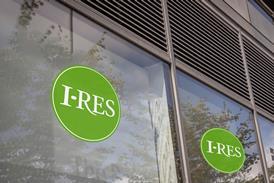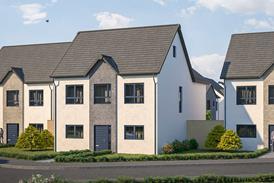The real estate industry has a major role to play in limiting further global warming to 1.5 degrees by 2050.

This requires decarbonisation of building stock – a big issue, given that 80% of today’s buildings will still be there in 2050. Most existing buildings need renovations and upgrades, but this is happening far too slowly. The 2050 target requires an annual renovation rate of at least 2% of total stock, while Europe is closer to 0.2%.
One of the greatest obstacles to decarbonisation is failure to consider the investment needed to reach net zero when we value buildings. As a result, current building values are too high and we face a ‘carbon bubble’. And when a bubble bursts, it sends a shock through the system, making investment markets illiquid and values evaporate. It not only impacts value, but also the liveability and livelihood of neighbourhoods and cities.
No European country has regulation requiring buildings to be net zero within a certain time frame. As a result, valuers do not consider this risk – and the necessary investment.
Lower-value locations, where it is harder to make the business case for upgrades, risk spiralling downwards in terms of real estate quality, energy efficiency and occupier demand. Buildings here risk a sudden drop in value or may become impossible to let, and suddenly become worthless.
The good news is that we can prevent the carbon bubble from bursting if we shift our focus from short-term advantages to working together on the broader goal. If we focus on the longer-term, we can preserve values, protect exit yields and show a financial benefit to net income from addressing decarbonisation.
This starts with realising that while acting comes at a cost, doing nothing is an increasing threat to longer-term values and investment performance.
This starts with realising that while acting comes at a cost, doing nothing is an increasing threat to longer-term values and investment performance.
Leading players have started to assess the costs of making buildings net zero, but it is vital to bring the wider industry on board. We need to spread this knowledge and collaborate on a common methodology to assess the cost of decarbonising buildings, using tools such as the Carbon Risk Real Estate Monitor (CRREM), while adding other key information such as climate data and standardised cost assessments for decarbonisation.
If the industry uses the same data sets as part of a common tool available to all, and agrees to disclose to key stakeholders the transition risks and impact on values, it will create transparency and drive a sense of urgency.
The consultation on valuation guidelines, which propose a common methodology to assess and disclose the risks of decarbonising buildings, closes on 3 March. We need the bright minds in the industry to provide feedback. A standardised risk assessment tool will help provide evidence to support valuations, understand better the impact of capital expenditure and show financial benefits to net income.
This way we keep all our cities and neighbourhoods investible and liquid, not just higher-value locations where the business case to decarbonise is easier to make. It is all about moving from seeking a short-term competitive advantage for some properties to the long-term preservation of values across all our buildings, for the good of our industry, cities and planet.
Lisette van Doorn is chief executive of ULI Europe
































No comments yet